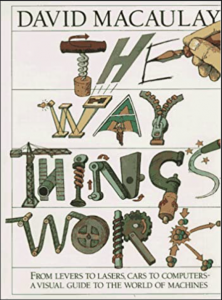DC Circuit Gets Help from Grid Experts in Vacating ACE Power Plant Rule
The importance of understanding how things work
 I’ve seen lots of good analysis already (including this post from Dan) of the DC Circuit’s decision today to invalidate the Trump Administration’s ACE Rule, which governs climate emissions from coal-fired power plants and does essentially nothing to reduce those emissions. It turns out that doing essentially nothing is not enough.
I’ve seen lots of good analysis already (including this post from Dan) of the DC Circuit’s decision today to invalidate the Trump Administration’s ACE Rule, which governs climate emissions from coal-fired power plants and does essentially nothing to reduce those emissions. It turns out that doing essentially nothing is not enough.
There’s a lot to like about the court’s decision, and I’m especially gratified that it reflects an understanding of the workings of the electricity grid. Last year, UCLA Emmett Institute faculty William Boyd, Ann Carlson, Charlie Corbett and I filed an amicus brief in this case on behalf of a group of engineers with expertise in the operation, structure, economics, and reliability of the U.S. power system: Benjamin Hobbs, Brendan Kirby, Kenneth Lutz, and James McCalley. Our grid experts weighed in to aid the Court in understanding the physical features of electricity and the electric grid, as well as the ways that pollution controls have historically interacted with grid operations.
This context was important to the court as it assessed the legal standard at issue. The Clean Air Act directs EPA to adopt a rule based on the “best system of emission reduction” that has been adequately demonstrated for reducing CO2 emissions from these sources. EPA took the position that the “best system” could involve only certain types of emission reductions, namely those resulting from changes at the individual plants themselves. But, we wrote,
[t]he ACE Rule excludes emission-reduction measures that take advantage of grid operations and interconnectedness, such as generation shifting. It adopts a Best System definition that does not reflect real-world understandings of how best to reduce power-sector CO2. As discussed below, the consequence is that costs of achieving the targeted emissions reductions are much higher than necessary, and inexpensive opportunities to lessen emissions further are missed.
Today’s decision cites and quotes our brief both in its discussion of the workings of the grid and in its assessment of the legal standard. The Court writes:
[T]he EPA reads the statute to require the Agency to turn its back on major elements of the systems that the power sector is actually and successfully using to efficiently and cost-effectively achieve the greatest emission reductions. See Grid Expert Amicus Br. 22 (“observing that the ACE Rule “imposes greater abatement costs on industry than other approaches would to achieve the same effect”).
The court concludes that EPA’s statutory reading is wrong, in part relying on an understanding of the interconnectedness of the grid and its operations. “A best system “for” a source [] might entail a broader array of controls that concern but are not immediately physically proximate to the source—such as, for instance, generation shifting,” it says. “The EPA has ample discretion in carrying out its mandate. But it may not shirk its responsibility by imagining new limitations that the plain language of the statute does not clearly require.”
The court also cites our brief’s discussion of the history of power-sector pollution control in rejecting EPA’s “major questions” argument. (That rejected argument asserts, essentially, that defining the “best system” to include generation shifting can’t be appropriate because it would expand the agency’s power to a degree not clearly allowed by Congress). The court writes:
The EPA suggests that counting generation shifting among the tools for emission reduction risks expanding the Agency’s regulatory sights too far, because “any action affecting a generator’s operating costs could impact its order of dispatch and lead to generation shifting.” That is exactly right: Any regulation of power plants—even the most conventional, at-the source controls—may cause a relative increase in the cost of doing business for particular plants but not others, with some generation-shifting effect. That is how pollution regulation in the electricity sector has always worked. Regulators—including, for example, Congress in the Clean Air Act’s acid rain cap-and-trade program—have long facilitated those generation-shifting effects to serve the goal of pollution reduction. See Grid Experts Amicus Br. 13–15.
So the EPA’s contention that it cannot consider measures resulting in generation shifting as part of its best system proves far too much: If that were so, the EPA would be limited to considering only measures that power plants could adopt at zero cost, so as to maintain their relative-dispatch position. That is, of course, incompatible with Congress’ instruction that the best system take cost into account as only one factor among several, and contrary to the very nature of environmental law, which requires the regulation of polluters and material changes in their pollution emissions.
(some citations omitted).
Given the complexity of both the electricity grid and the ACE Rule docket, I am grateful to my grid expert clients for sharing their expertise with the court and helping to ensure that today’s decision is well-grounded in facts about how things work. Three cheers for expertise.






Reader Comments